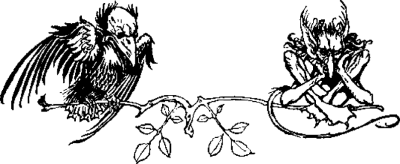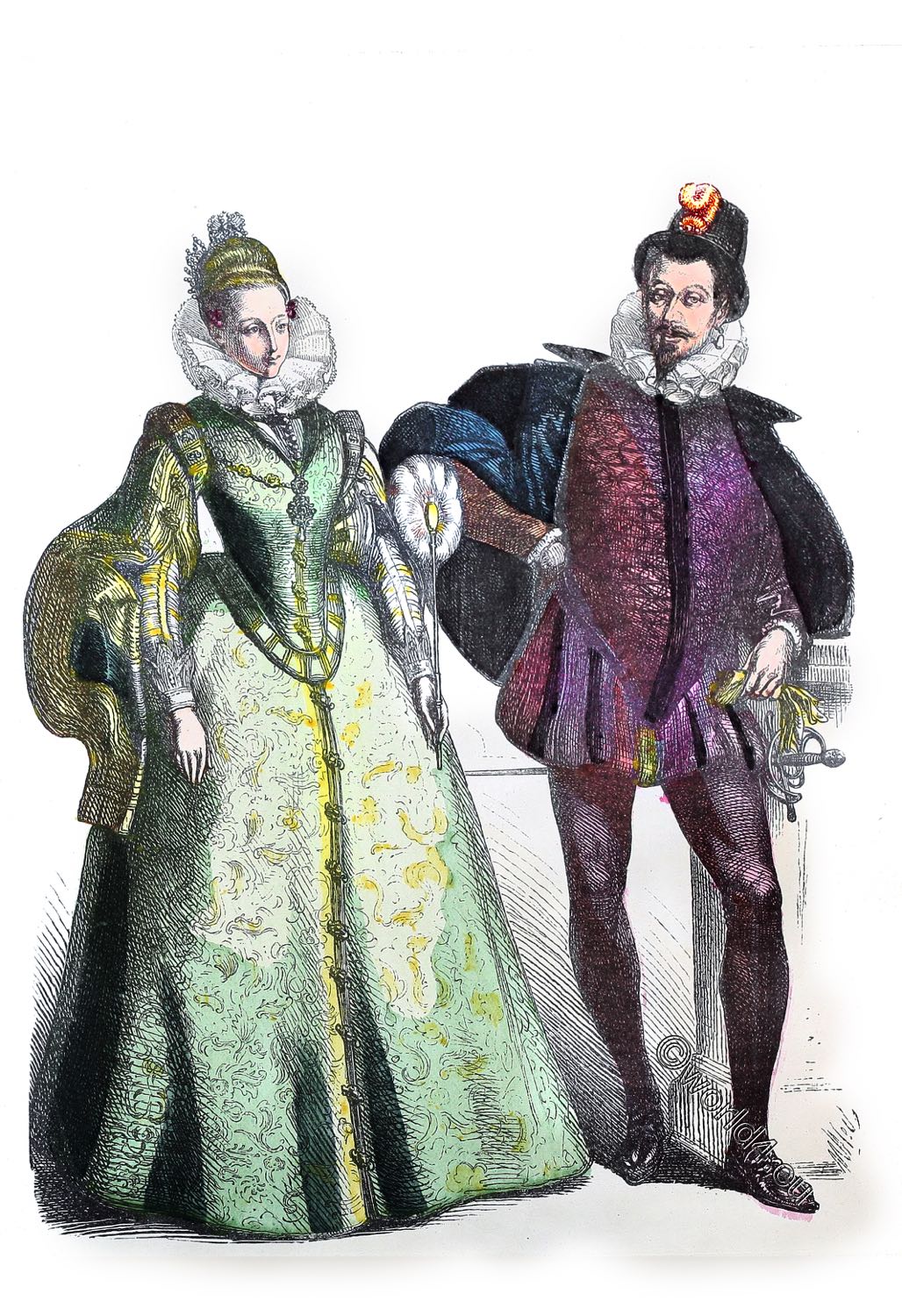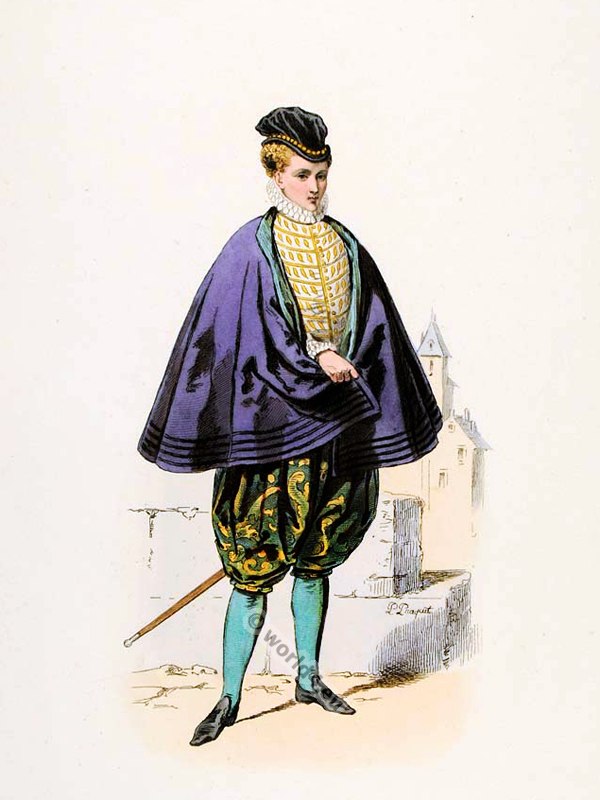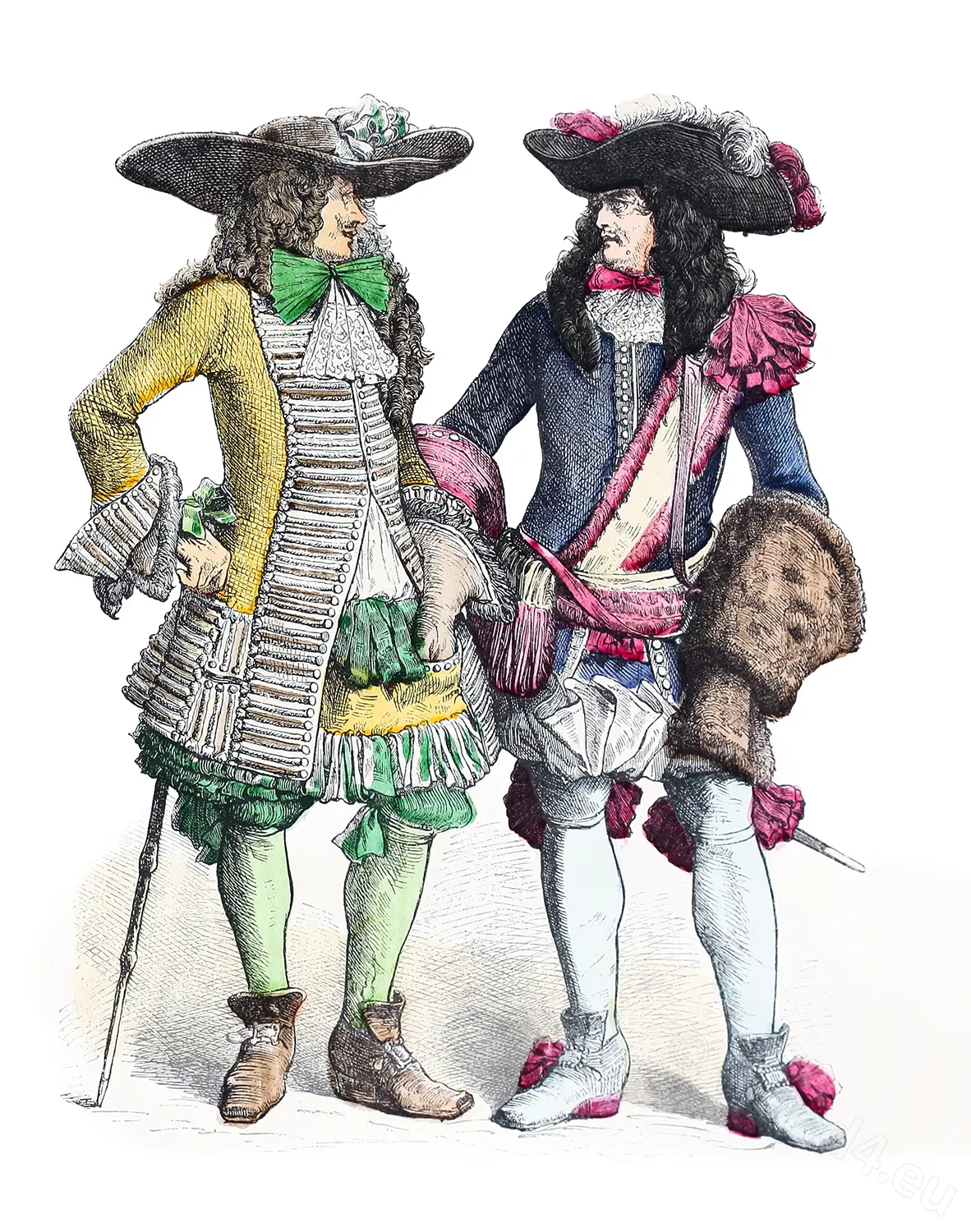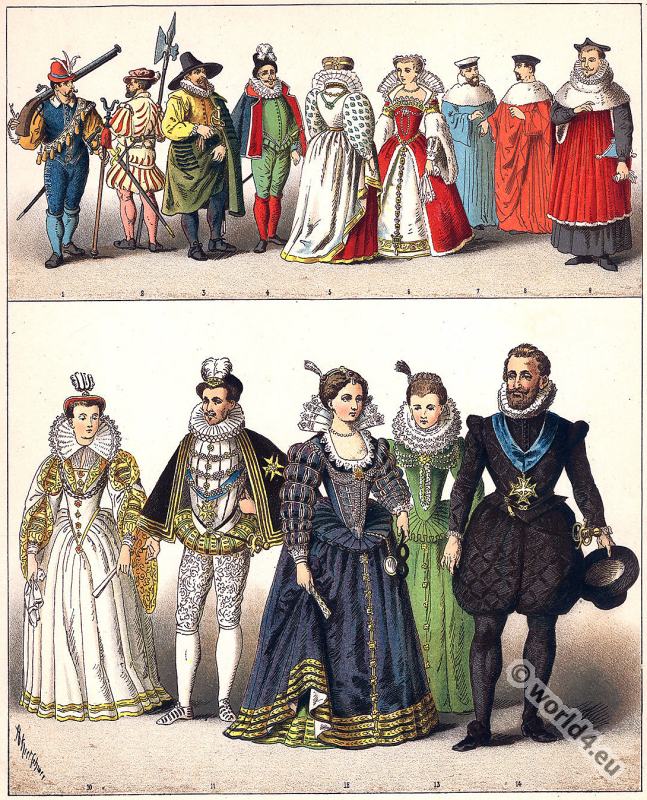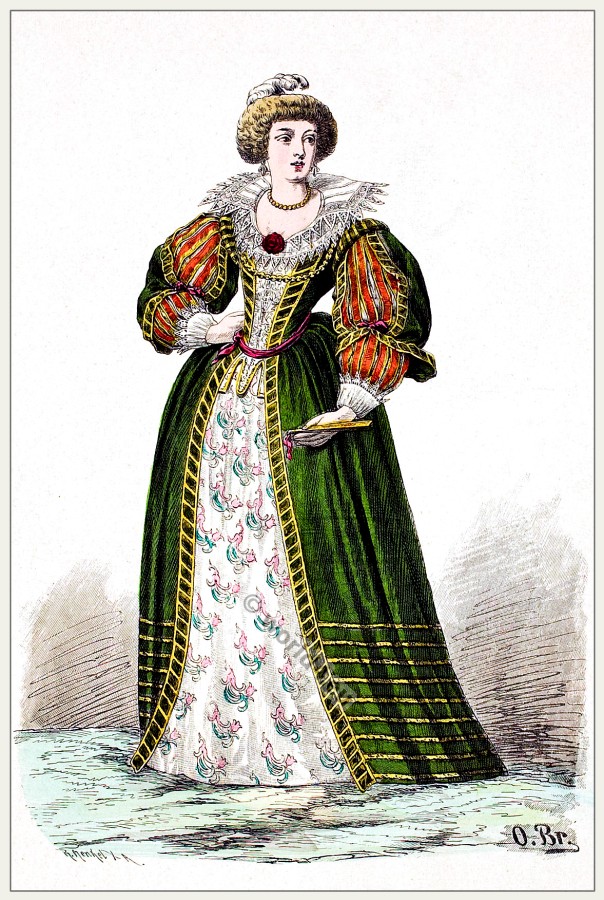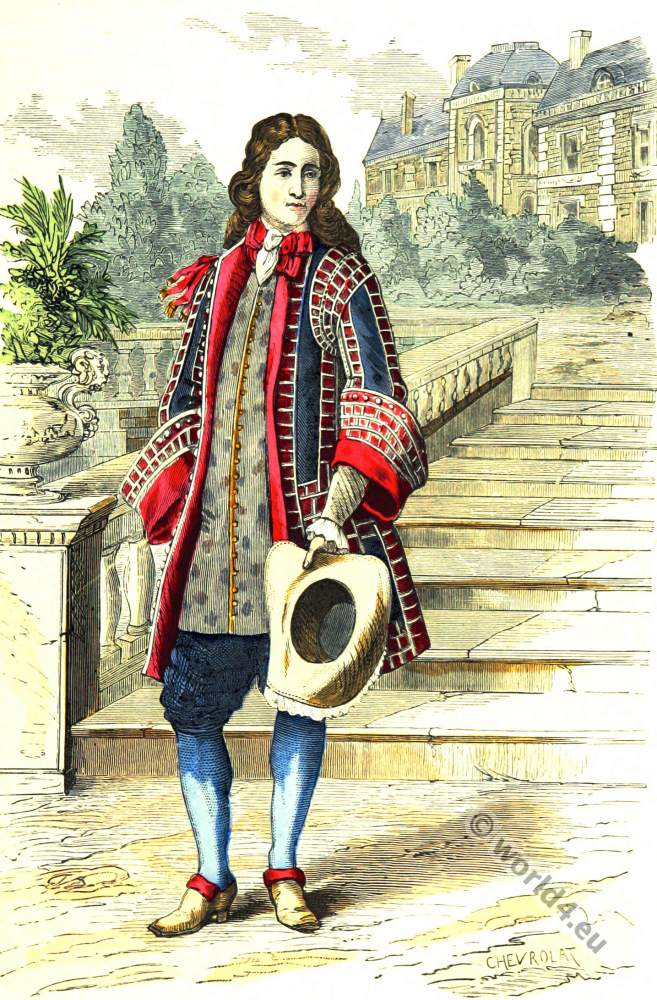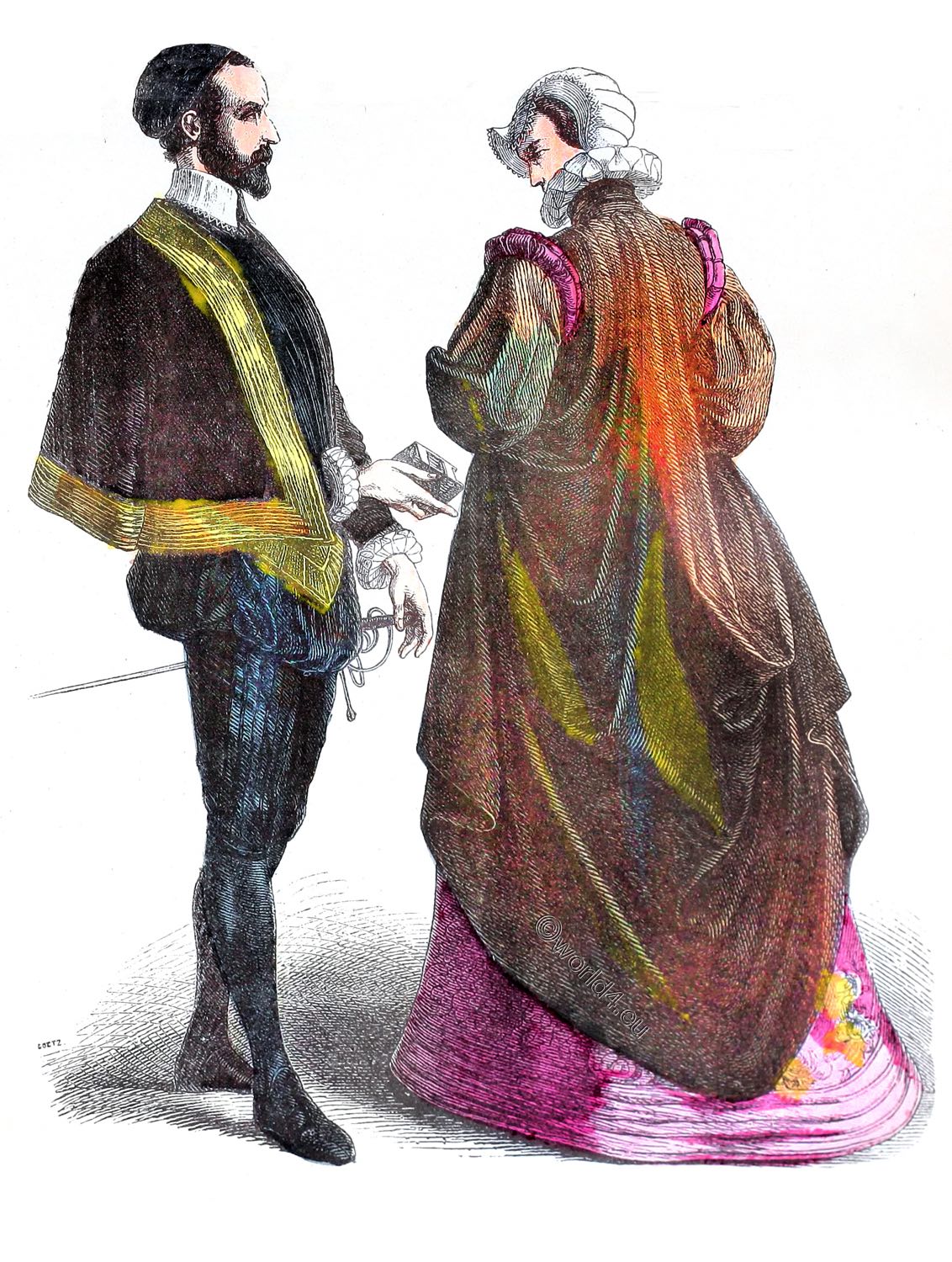
French nobleman and noblewoman 1550.
Spanish clothing fashion of the late Renaissance and Spanish Baroque in the period between about 1550 and the Thirty Years War around 1620.
The nobleman wears a typical element of the Spanish fashion, the short, loose-fitting cloak, called the Spanish Cape. This was not buttoned and was loose over her shoulders. He wears a waist-length, quilted jacket with a mandarin collar, which was called “goose belly”. It was closed by a central row of buttons. The sleeves are occupied by frill sleeves.
Spanish breeches with a padded waist high set. Buckled shoes and stockings. On his head a little beret and one wears a beard. A long iron spike completes the appearance.
The nobel woman is in stiff corset bodice with drop waist. The narrow sleeves and collar are also completed by ruffles cuffs. The shoulders are padded bead. The style is worn high. The vertugado skirt is floor length and richly decorated. Forward it will be kept open so that the cone-shaped, stiff petticoat, which is also decorated emerges. This was the forerunner of the crinoline (Farthingale, Hoop skirt). As headdress she wears an ornate bead cap, called Escoffion.
She wears under the long skirt the Kothurne that shoes are made of wood or cork. The folds of the dress are over with hot iron and wire into shape.
The Spanish fashion. Late Renaissance costumes in the transition to the Counter-Reformation, early Baroque period.
Source:
Related
Discover more from World4 Costume Culture History
Subscribe to get the latest posts sent to your email.

